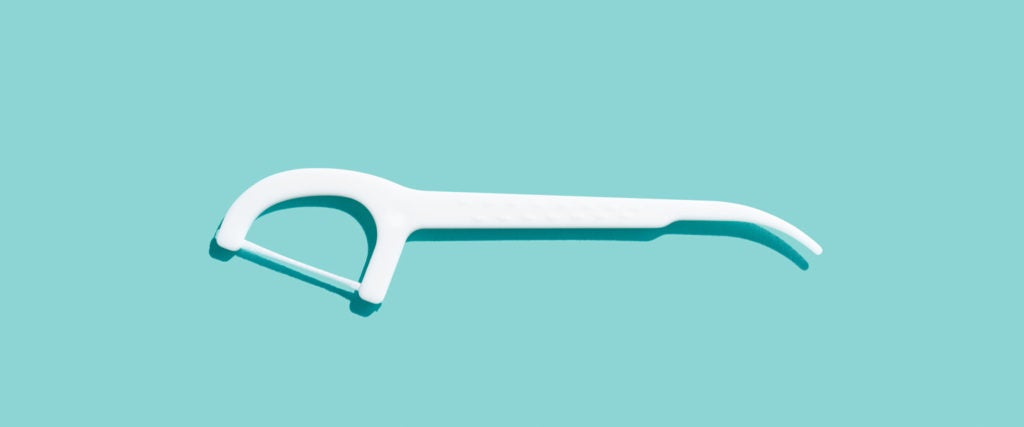Life is hard enough as it is. Flossing with regular floss is genuinely more than I can manage. I’m using the kind already attached to a stick or nothing at all. I remember in middle school when I had braces, dentists and orthodontists would try to convince me to floss using a flimsy plastic needle in order to weave the floss behind my braces. Absolutely the fuck not. It just was not going to happen for me. The fact that I now scrape at my teeth with anything in addition to a toothbrush is good enough, as far as I’m concerned. But recently, one of my freak colleagues asked whether or not using those floss picks actually counts as flossing.
There’s floss attached to it. Of course it counts as flossing. Get out of my face.
Despite my unwavering confidence and commitment to this fact, however, I had to know for sure. So, I did some research.
“The American Dental Association recommends cleaning between your teeth daily with an interdental cleaner (like floss),” the ADA’s consumer website MouthHealthy states on its page regarding flossing. While floss is indeed an interdental cleaner, it isn’t the only interdental cleaner, and the ADA doesn’t specify a preference for floss.
In this handy little documentary they’ve made on the topic, they explain that alternative forms of interdental cleaners can be particularly helpful for people with braces or those who otherwise have trouble handling string-style floss. On the flossing page, they further state that “dental picks might help you get to hard-to-reach places. Water flossers might be a good option if you have trouble flossing by hand or have dental work that makes flossing difficult, like braces or permanent or fixed bridges.”
For even further proof, the ADA website lists all of the products that have received their seal of approval. In the category of interdental cleaners are both traditional flossers and the plastic pick variety. There’s even a weird toothpick-looking thing.
Basically, the ADA says these picks count as floss, and they’re the authority. I’ll admit, cleaning in between the teeth is important in removing plaque. It’s the plaque that lurks between your teeth untouched by toothbrushes that specifically causes cavities and tooth decay. Considering the World Health Organization previously stated that all preventative and elective dental work be postponed due to the pandemic, it’s definitely wise to do what you can to protect your teeth at home.
Notably, though, you might want to stick to the types of products the ADA recommends. Just because a dental pick counts as flossing doesn’t mean you should totally DIY it. As their website states, 42 percent of people who have used “unconventional” forms of interdental cleaners, like pieces of paper or safety pins, have hurt themselves. So, don’t inadvertently send yourself to the dentist because you cut your gums trying to avoid the dentist. Continue to use your ADA-approved dental picks, and rejoice.

